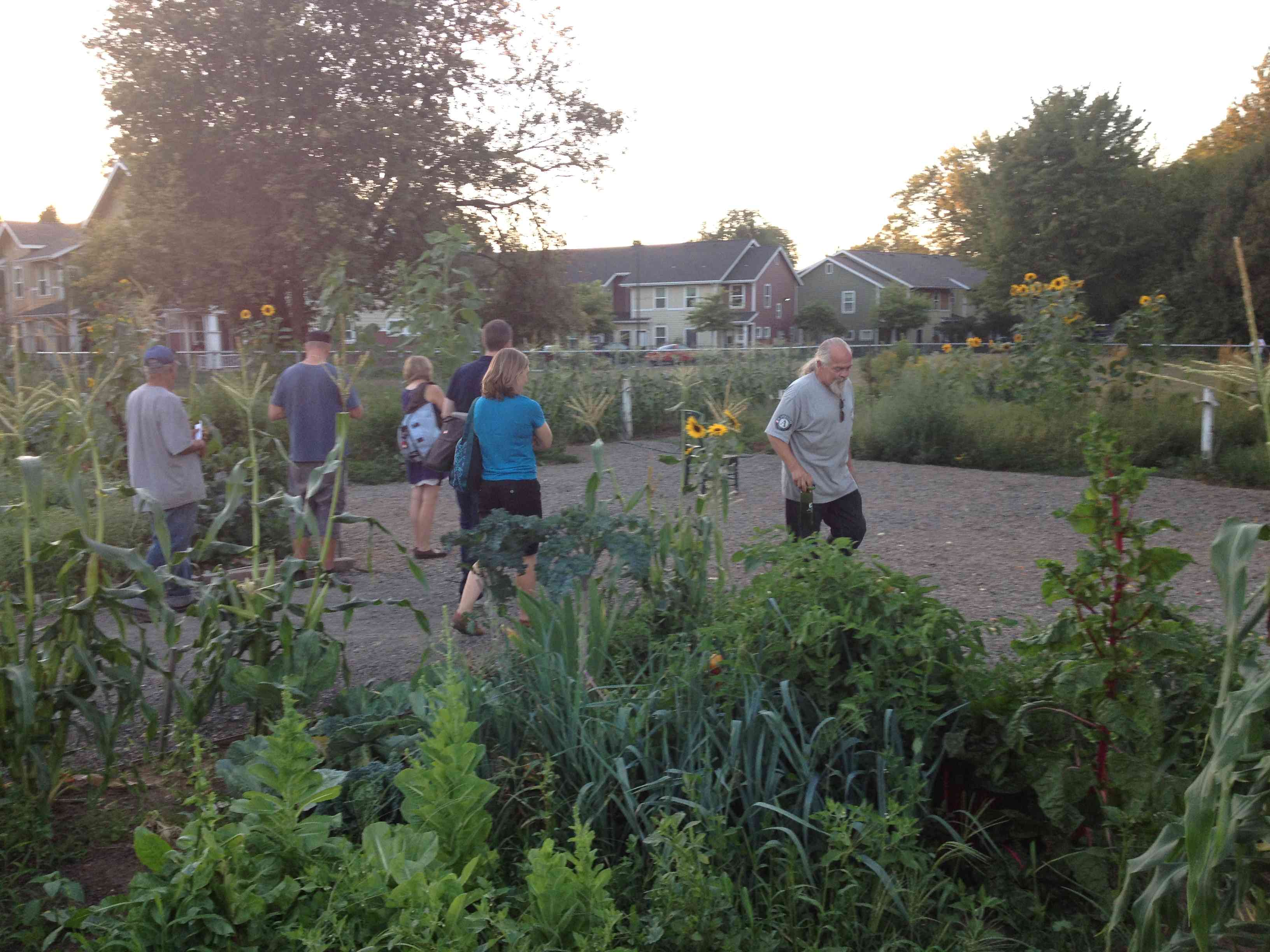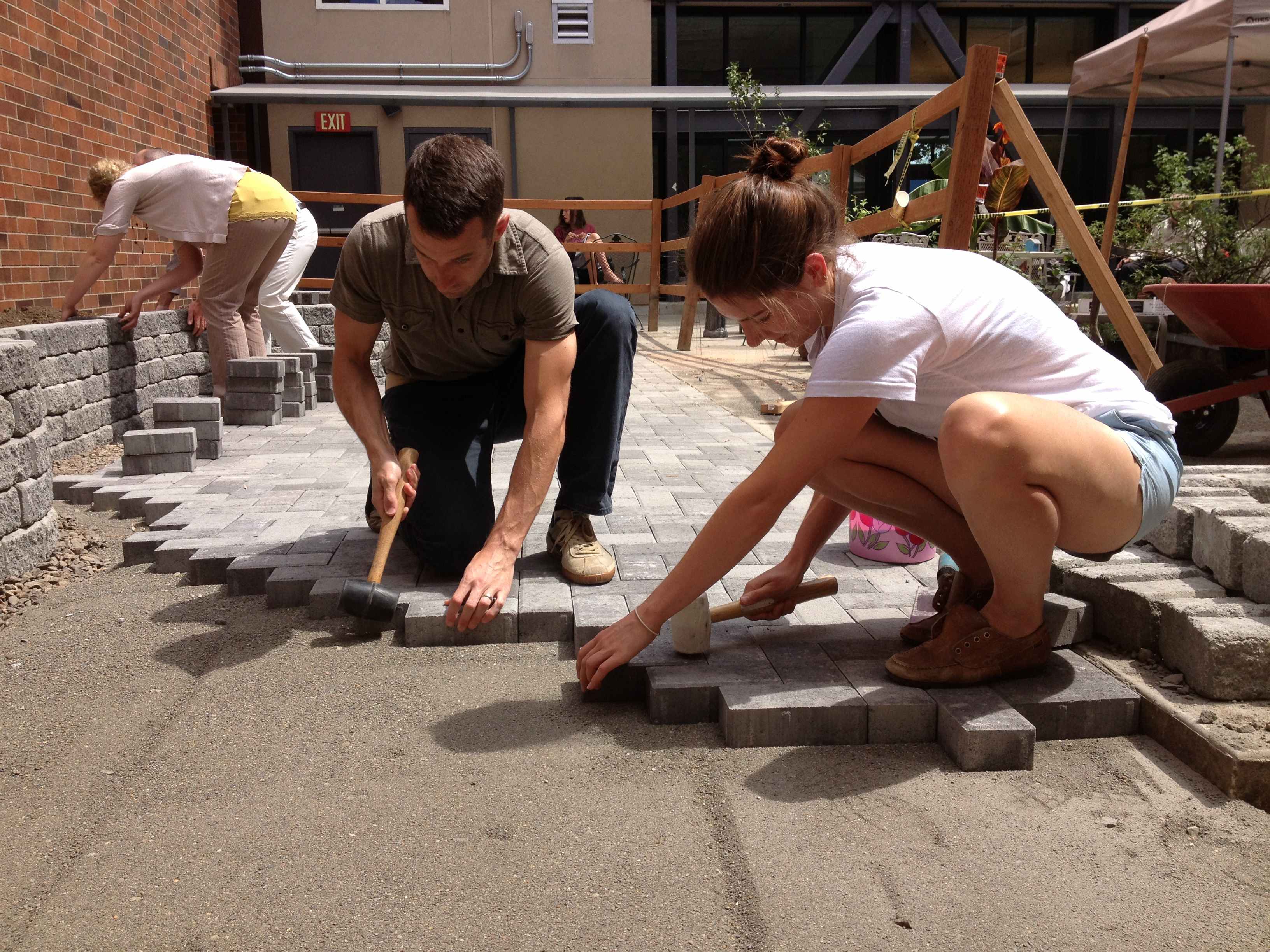A Summer with Architecture for Humanity: Sarah's Final Post

At the chapter meeting this month, my summer position with Architecture for Humanity Portland officially came to an end. As the meeting’s featured speaker, I presented my accomplishments as Chapter Development Coordinator over the past 10 weeks. Looking back, it’s unsettling how quickly the summer flew by, and I find myself wondering how I managed to fit so many significant experiences within such a short period of time.
Since my last blog post, I’ve helped AFH Portland grow considerably as an organization. Working closely with Becca, the Director of Membership and Communications, I created a comprehensive Chapter Manual to guide the future operations of our chapter. Hopefully, the Manual will serve as a resource to facilitate the success and sustainability of chapter activities long after the current directors are gone.
Using a draft manual written by AFH New York as my model, I created my own 52 page (and growing) document that contains an overview of chapter organization and roles, a project toolkit, resources for information management and chapter finances, a guide to grants and grant-writing, and a strategic plan for future development. Essentially, the Chapter Manual integrates the various components of my work this summer within one cohesive document. Surprisingly, no other chapter to date has created a complete operational manual, so my work could potentially serve as a resource for AFH chapters nationwide (which is really exciting!).
In addition to the Chapter Manual, I also worked on the final leg of my project with Nick, Director of Outreach and Development. I began my summer position collaborating with Nick to create a client survey, and my fellowship experience came full circle when he and I met again a few weeks ago to discuss the results of the survey and brainstorm outreach and marketing strategies. These strategies include methods to attract new volunteers—students, professionals, and community members—as well as develop self-generated projects, rather than relying on clients to come to us. We focused especially on increasing the presence of AFH Portland within the Portland nonprofit network, to help our chapter become a known resource to local communities and organizations.
After the meeting, I created outreach and marketing goals to focus future efforts and developed a list of methods to achieve each goal. For example, attracting new volunteers could entail creating one-day volunteer opportunities to accommodate people with little time to commit, holding speaking engagements at local universities, setting up a booth at events such as nonprofit fairs and farmers markets, or tracking Continuing Education Units (CEUs) to give professionals credit for their donated time.
To promote chapter activities to AFH Portland’s growing network of volunteers and partner organizations, I also began laying the groundwork for a quarterly chapter newsletter. So far, I have designed an online template with stock sections for announcing new projects, showcasing important volunteer efforts, and publicizing chapter activities. It is my hope that eventually the newsletter will become self-sustaining, so that each quarter a different volunteer can publish it electronically with relative ease.
The remainder of my time leading up to the August chapter meeting I spent outlining and creating my presentation. Per the directors’ suggestions, I made the presentation an overview of my various administrative projects this summer, which until that point had largely flown under the radar. Normally, the notion of addressing a room full of professional adults would terrify me, but after my Living Building talk earlier this summer, I worked out most of my public speaking jitters.
As I hoped, my audience that day consisted of a small group of familiar faces who were genuinely excited to learn about my accomplishments as Development Coordinator. Even the directors—Nick, Becca, Rachel, and Deana—were thrilled at the amount of work that I completed outside of our individual projects together. It was rewarding to explain the details of my projects and listen as the directors interjected to endorse my work and what it means for the future of our chapter.
Funny enough, the most difficult portion of my presentation was creating the slides themselves. To test my recently acquired InDesign skills, I used the program to create my slides and graphics, including a file-structure info graphic and grant research flowchart. My many, many hours of clicking, dragging, cropping, and squinting paid off in a big way: the directors asked to post my slides on the chapter website to showcase my efforts and serve as a resource for other members.
As you may have guessed by the in-progress nature of nearly every project introduced over the course of this blog, my work with AFH Portland is far from complete. My file management proposal must be implemented, grant research continued, and chapter manual finalized. I hesitate to leave any of these projects hanging, and thankfully the directors don’t want to see me go just yet. I am pleased to announce that I plan to continue my work as Development Coordinator, and I for one couldn’t be happier. It was my goal to stay on board beyond the scope of my fellowship project, and I am excited to see what my future with AFH Portland holds.
Wrapping up my experience thus far is difficult. So much occurred this summer that couldn’t fit into this blog, and so much remains in progress that it’s hard for me to get a handle on it all just yet. Regarding my Project Coordinator gig with Village Gardens, things are moving forward, but very slowly. My team met with the community recently, only to be confronted by more building restrictions than originally anticipated. Now it’s back to the drawing board.
So in lieu of making a grand statement that neatly sums up my experience, I will leave you instead with an image of my proudest moment of the summer, when Rachel, Director of Projects, approached me after the chapter meeting to thank me for my hard work and contributions to the chapter. To my surprise, she openly stated her astonishment at how much I accomplished. She said that I exceeded the directors’ expectations for my position, that I successfully translated their rough ideas into concrete strategies and documents that will make a tangible difference to the future of our organization.
Honestly, I am just as amazed at everything that I managed to set in motion this summer, for myself and my organization. The way I see it, the most valuable lesson that this experience has taught me is to never to doubt my capacity to succeed in unfamiliar territory. During my first meeting with the directors, I remember reading their outline of my position and feeling way in over my head. Though nervous, I just nodded, smiled, and resolved to go for it. Then I did. I’d say things worked out pretty well.
P.S.!
The fact that I spent most of my working hours in front of a computer screen doesn’t mean that I never got my hands dirty this summer. Aside from two orchard work parties at the Seeds of Harmony Garden and an afternoon spent dragging 100 yards of hose around to water said orchard, my fellowship project presented me with the opportunity lend a hand at the Macdonald Center, AFH Portland’s first ever built project. (Unfortunately, due to funding difficulties, no other AFH Portland project has entered the construction phase).
The Macdonald Center is a local nonprofit organization that provides low-income, at-risk individuals with housing and support services. In 1998, the Center constructed a new facility in downtown Portland, but due to lack of funds its central courtyard was never completely renovated. A year ago, AFH Portland stepped in to design a new, wheelchair-accessible courtyard with plants, seating, and smoking shelters for residents.

Despite a few roadblocks—including every contractor quitting—the Center broke ground in early August, with an August 16th deadline for phase one of construction. Eager to get involved, I stopped by the courtyard for an afternoon and helped out laying the patio. Nicole, the Project Coordinator, stopped by that day to check out the progress and snap a few pictures of Nick and I setting pavers, mallets in hand. Subsequently, I became the face of a chapter-wide call for volunteers.

As a volunteer, I also received an invitation to the opening gala for donors and board members (a much swankier affair than I had originally envisioned). More AFH members and directors showed up as well, and I spent an hour and a half soaking in their discussion of the ups and downs of the architectural profession. Along with the other AFH’ers present, I was even recognized for my participation during the speech portion of the evening, and on the way out I got to pose for an official AFH Portland photo.
Returning to my car, I overheard a group of attendees praising our organization and its positive impact in the lives of Macdonald Center residents. In that moment, I was proud to be a small part of the Macdonald Center effort and a large part of AFH Portland as a whole.
Tags: Architecture for Humanity, nonprofit, community garden, community, volunteer coordinating,
